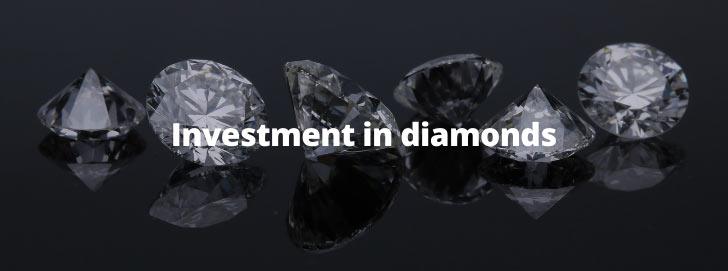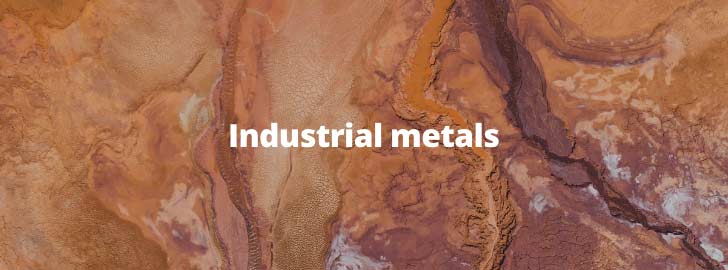he global economy in 2021 gradually recovered from the 2020 crisis. Despite the fact that supply chains are failing, the economies of many countries are gradually gaining momentum.
What you need to know about investing in gold
Investing in any gold instrument is an investment for a long time. Some of the gold-related investment vehicles are ideal for retirement savings. Gold is bought not only and not so much because of profitability. Gold as an investment is, first of all, a protective asset, which is less subject to volatility during periods of market fluctuations. Therefore, investors in moments of economic recession and serious falls in the stock market flow precisely into precious metals.
Previously, it was gold that was the main currency, coins were made from it, which were used as a means of payment. But later gold turned more into an investment tool. Investing in gold, as the most reliable asset in the long term, is suitable even for novice investors. Today you can buy high quality gold coins, silver, platinum and palladium items.

Jewelry made of gold
In its pure form, this cannot be 100% called an investment, since the essence of this process is that today we invest in a certain asset and expect that in a year (or in 10 years) it will bring us 20% more, as a rule, when selling. When buying jewelry and gold products, you need to understand that there is no market for this product as such.
Jewelry and products can be sold either through private advertisements or to pawn shops that are engaged in buying. At the same time, jewelry is purchased at a serious discount, so it is unlikely that you will be able to earn a lot in this option.
Precious metal bars
Gold can be purchased in the form of bars of various weights, for example, in cans.
Among the advantages, it is worth highlighting the simplicity of this type of investment: the investor only needs a passport and funds for the transaction. The emotion of physically owning the gold also comes into play: you can bring it home and everyone can look at it).
But there are more cons than pros:
- Large spread (difference) between the purchase and sale prices of an asset. For example, if a bank sold you gold for one price, then it is ready to buy it at a discount of about 5-8%. Therefore, in order for such an investment to bring you a profit, you must wait until the purchase price rises significantly, and this can take more than a year.
- Storage conditions. There is a simple option here, “home”, when the investor keeps the gold on his shelf. You also need to consider that this is a relatively soft metal that can be scratched. And each such scratch reduces the value of your asset. An alternative is to rent a safe or a safe deposit box.
Investment in diamonds

Diamonds are traditionally classified as "eternal values" that never lose their value, but only increase it. At first glance, this is a great way to invest money. You buy yourself a diamond in your youth, and closer to retirement you sell it at a much higher price - that's how you secured a decent old age. But not everything is so simple in diamond investments. In reality, investments in diamonds do not have a high return, and the idea that they only tend to rise in price is fundamentally wrong.
Let's say right away that buying diamonds in jewelry stores is a losing option. Ready-made products are sold there, the price of which includes labor costs, the seller's brand, commissions, etc.
The most attractive from an investment point of view are large diamonds weighing from one carat, color D-G, clarity LC-VS1. In addition, the diamond must meet the requirements of HRD, GIA or IGI certifications. They are the most authoritative organizations on a global scale, of those that deal with the certification of diamonds. The cost of a diamond weighing 1 carat and with standard characteristics is about 10 thousand dollars. The larger the diamond, the higher its price: a 2-carat stone is estimated at 40-50 thousand. There are relatively few stones weighing 1 carat or more on the market, and first of all, the general rise in prices is reflected in this category of stones.
Investment in loose diamonds
But there is a way that allows you to earn with the help of diamonds. It consists in buying an unmounted diamond and giving it to a jeweler to make jewelry. Some experts estimate the profitability of such an operation at 65-70% of the initial cost of a diamond.
But even buying a diamond is not as important as selling them. There is always a demand for diamond jewelry, but no one can say in advance how long it will take to sell a particular piece of jewelry. The main risk factor in this combination is poor jewelry design, which can make it difficult to sell.
Today, you can find many companies on the Web that kindly offer to buy diamonds from individual sellers “at the maximum cost corresponding to current world prices”, as a result of an examination carried out by professionals. Of course, each diamond is individual and inspection is possible only offline. However, a certificate such as the GIA can provide a preliminary assessment.
In general, diamonds cannot be considered a convenient tool in an investor's arsenal; the average return on them does not exceed 10%, which may not even cover the current inflation.
Supercharge Your AWeber Account
Take Your Email Marketing To The Next Level With These Powerful Tools
Investing in silver
One of the most undervalued metals is silver. In addition to directly preserving assets in the equivalent of the precious metal, this is also an investment for the prospect of growth. Silver is no longer so actively used in jewelry production, and at the end of the past year, the demand for it fell as well as the request from industrialists.
The demand for this metal will only grow. It is used in electric vehicles, microcircuits, high-tech devices, medical products, and solar panels. At the same time, global silver production will be able to increase as much as possible by an average of 25%. This means that the prospect of a shortage of this metal can spur quotes up.
You can also call silver an anti-crisis asset. It has more volatility and lower cost. This precious metal shows both high growth rates and has shown a record high price over the past few years. The volatility of silver is much higher than that of gold. Therefore, silver is more interesting for speculators, and gold for investors.
Industrial metals

Exchange-traded instruments associated with industrial metals such as copper and steel may be more profitable. The trend towards the transition to electric cars and alternative energy entails the use of large amounts of copper in the production. The infrastructure plan in the US and the construction of new generation sources as part of the transition to clean energy require a large amount of steel. Currently, China is holding back prices by selling off previously accumulated stocks, but this mechanism is temporary. The balance of supply and demand has not yet been formed. However, industrial metals are suitable for a longer-term investment - for a period of a year or more.
Among other metals for investment, one can consider those used in industry, for example, the platinum-palladium group. Such metals rise and fall as demand for them changes, so it is worth buying and selling them only if there is an understanding of the economic processes associated with the use of this type of investment.
Any future scenarios are not terrible for the investor if he adheres to the standard principles:
Never invest in one thing
Diversification is a commonly recommended strategy in investing - it means spreading your investments across a variety of assets, such as stocks, bonds, real estate, and commodities, rather than investing all your money in one type of asset or in one particular company. By diversifying your portfolio, you can potentially reduce the risk of losing money if one of your investments performs poorly.
It's important to note that diversification does not guarantee a profit or protect against loss. Investing always carries a degree of risk, and you should consider your financial goals, risk tolerance, and investment horizon before making any investment decisions. It's generally a good idea to consult with a financial advisor or do your own research before investing your money.
Keep a cash reserve for future purchases
Having a cash reserve is a smart financial move that can help you prepare for unexpected expenses and achieve your future financial goals. A cash reserve is an amount of money that you set aside in a savings account or other liquid assets that you can easily access when you need it.
The size of your cash reserve depends on your personal financial situation, but a general rule of thumb is to have three to six months of living expenses saved in your cash reserve. This can help you cover unexpected expenses such as medical bills, car repairs, or a sudden job loss without having to rely on credit cards or loans.
In addition to providing a safety net, a cash reserve can also help you achieve your future financial goals, such as a down payment on a home or a dream vacation. By setting aside money on a regular basis and allowing it to accumulate over time, you can make progress towards these goals while still having a cushion for emergencies.
Keeping a cash reserve is a wise financial move that can help you prepare for the unexpected and achieve your long-term goals.
Have at least two base currencies in the portfolio
Having at least two base currencies in your investment portfolio is a strategy called currency diversification. It involves spreading your investments across different currencies, in order to reduce the risks associated with fluctuations in exchange rates.
Currency diversification can be particularly important for investors who hold assets denominated in a single currency, as their portfolio may be vulnerable to volatility in that currency. By investing in assets denominated in different currencies, investors can potentially reduce the impact of exchange rate movements on their portfolio's overall performance.
For example, if you hold assets denominated in US dollars and the dollar loses value relative to other currencies, the value of your portfolio could decline. However, if you also hold assets denominated in a different currency that appreciates relative to the dollar, the impact of the dollar's decline may be partially offset.
Currency diversification does not eliminate all currency risks, and there are costs associated with converting currencies. Additionally, currency movements can be difficult to predict, and there is always a risk that an investment may underperform or lose value. Therefore, it's important to carefully consider your financial goals, risk tolerance, and investment horizon before implementing any investment strategy, including currency diversification.

they are all too expensive for me. I still rely on cash cos I don’t have cards and my husband receives his wages daily by cash. I don’t know how I can buy investments to can you please stop my subsription, thanks.
Extremely useful article, thanks.